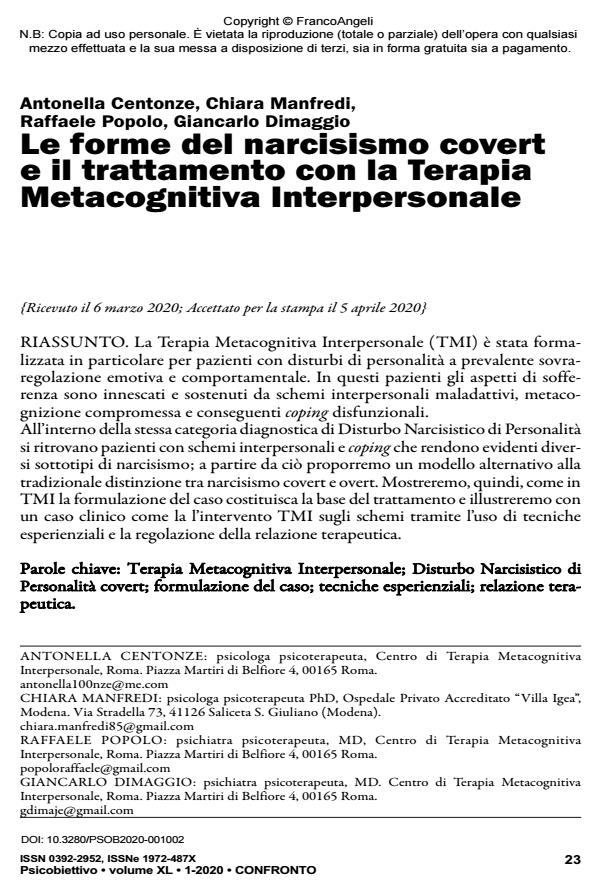Subtypes of covert narcissism and treatment with metacognitive interpersonal therapy
Journal title PSICOBIETTIVO
Author/s Antonella Centonze, Chiara Manfredi, Raffaele Popolo, Giancarlo Dimaggio
Publishing Year 2020 Issue 2020/1
Language Italian Pages 16 P. 23-38 File size 161 KB
DOI 10.3280/PSOB2020-001002
DOI is like a bar code for intellectual property: to have more infomation
click here
Below, you can see the article first page
If you want to buy this article in PDF format, you can do it, following the instructions to buy download credits

FrancoAngeli is member of Publishers International Linking Association, Inc (PILA), a not-for-profit association which run the CrossRef service enabling links to and from online scholarly content.
Metacognitive Interpersonal Therapy (MIT) was conceptualized for patients with personality disorders showing emotional and behavioral over-regulation. In these patients emotional suffering is triggered and supported by maladaptive interpersonal patterns, impaired metacognition and consequent dysfunctional coping. Within the Narcissistic Personality Disorder category it is possible to identify patients with different interpersonal patterns and coping mechanisms which make it possible to identify different subtypes of narcissism; starting from this assumption we will suggest an alternative model that differs from the traditional distinction between overt and covert narcissism. We will suggest that in MIT the formulation is the basis of the treatment and we will illustrate through a clinical case how MIT clinicians intervene using experiential techniques and the regulation of the therapeutic relationship.
Keywords: Metacognitive Interpersonal Therapy; Covert Narcissistic Personality Disorder; case formulation; experiential techniques; therapeutic relationship.
Antonella Centonze, Chiara Manfredi, Raffaele Popolo, Giancarlo Dimaggio, Le forme del narcisismo covert e il trattamento con la Terapia Metacognitiva Interpersonale in "PSICOBIETTIVO" 1/2020, pp 23-38, DOI: 10.3280/PSOB2020-001002